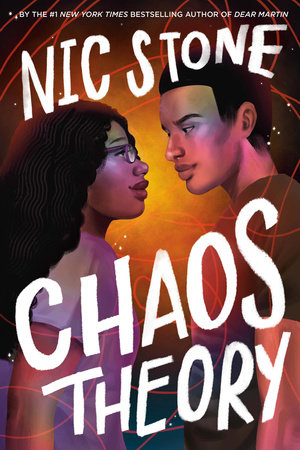Nic Stone Shares Her Personal Struggles With Mental Illness
by Nic Stone
**Content warning: The following essay contains euphemistic mentions of depression and suicide. Please read with caution.**
The first time I met the Boogeyman, I was fourteen years old. And I had no idea what was going on or what I was supposed to do. All I knew was that something was happening with my skin: it would itch for no reason, and if I scratched, I would wind up covered in welts. It eventually became so severe that if anything touched my skin, even lightly, it would itch and puff up.
I remember going to the dermatologist and receiving a diagnosis: urticaria factitia, also known as dermatographia, or “skin writing disorder.” With said diagnosis came medication, and though that helped treat the symptoms to an extent, the answer my father and I got when we asked what had caused me to develop the condition was something no one wants to hear from a medical professional: “We’re not really sure.”
The thing was, I did have an idea what was causing my “skin thing,” as people around me would refer to it when they found out (and you better believe I did my best to hide it . . . which just made it worse). I knew, deep down, that I was having problems inside. I never slept well and was plagued by nightmares; both my home and school lives had gotten . . . tricky. And when I woke up each morning, I was never excited and ready to take on a new day. I was miserable. Perpetually panicked. Always had a racing heart and felt the need to look over my shoulder.
I was deeply NOT okay . . . but nobody believed me.
The summer I turned fifteen, that not-okayness came to a head: I was visiting a relative’s house, and after multiple attempts at getting someone to see me and realize I needed help, I finished off the bottle of my skin meds. Just took the cap off, dumped the contents in my mouth, and swallowed them. With my younger siblings and cousins in the house, I immediately realized I’d made a grave error. I didn’t want to scar them with my death and went to tell one of the adults what I’d done. Thankfully, the worst things to come from it were a top-notch berating (“Why would you do something so stupid? Are you crazy?!”) and moderate diarrhea.
I still wasn’t okay inside, but at least I hadn’t succeeded at making myself dead.
Fast-forward. Age eighteen. I’d completed — barely — one semester of college at the Georgia Institute of Technology. My grades weren’t great and I was miserable. Two weeks into the second semester, I went to a basketball game at my high school alma mater, returned home to go to bed, and woke up unable to get out of bed and with a throat so sore I couldn’t open my mouth. The throat part was easy: tonsilitis.
The other part, though? The not being able to get out of bed and wanting to sleep myself to . . . permanent sleep? That was the Boogeyman again. And he’s never really gone away.
Another fast-forward. 2020. I’m thirty-five. The world is on fire. Everything around me, it seems, is falling apart. It’s Black Friday and I’m in Maui with my family. I wake up devastated that I’ve woken up — wanting and willing to do just about anything to prevent myself from waking up again. The Boogeyman was back. But this time, because I was an “adult” or whatever, and I’d learned a thing or two about mental health — which is really brain health, but we’ll get to that in a minute — I called my therapist. Who referred me to a psychiatrist. Who handed me the pair of diagnoses I knew, deep down, had been in there all along. My Boogeymen: major depressive disorder and generalized anxiety disorder. Both are described in the American Psychiatric Association’s Diagnostic and Statistical Manual of Mental Disorders, as caused by fluctuations in brain chemicals called neurotransmitters that impact our perceptions and our bodies’ responses to stimuli.
And both are perfectly normal and far more common than we’ve been led to believe.
I am thankful to be alive, but I do believe my life would have gone differently had someone, some adult, taken me seriously when I told them I wasn’t okay as a teen. So, I wrote a book: Chaos Theory. It’s about a sixteen-year-old Black girl, one very much like myself, living with a diagnosed mental disorder (which I really wish we would call “neurotransmittal disorders” or “brain disorders,” but I digress) and a boy who has an undiagnosed one but isn’t ready to admit it. It’s about the beauty of life and living, even when your brain chemicals have gone all wonky — which can happen to anyone at any time. And it’s about validating these experiences and letting teens (and adults alike) know there’s nothing wrong with them if they’re having them. That it’s okay to sometimes not be okay.
We frequently treat “mental illness” like it’s the Boogeyman: we act like it doesn’t really exist while still fearing it and blaming it when terrible and seemingly “unexplainable” things happen. And in this case, the Boogeyman is very real and genuinely scary.
But it isn’t all-powerful or insurmountable. And we can do something about it. In fact, we must do something about it. Because many of our kids are suffering and need us to help them.
I’m okay now. And I’m thankful. But so many of us, including our young people, are not.
Isn’t it high time we stop pretending otherwise and show the Boogeyman who’s boss?
-
Buy the Book:

